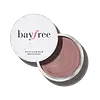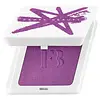What's inside
What's inside
 Key Ingredients
Key Ingredients

 Benefits
Benefits

 Concerns
Concerns

 Ingredients Side-by-side
Ingredients Side-by-side

Ethylhexyl Palmitate
EmollientParaffinum Liquidum
EmollientOzokerite
Emulsion StabilisingMica
Cosmetic ColorantCI 77891
Cosmetic ColorantCaprylic/Capric Triglyceride
MaskingDimethicone
EmollientDimethicone/Vinyl Dimethicone Crosspolymer
Skin ConditioningPolyisobutene
Silica
AbrasiveCI 77492
Cosmetic ColorantCI 77499
Cosmetic ColorantCI 77491
Cosmetic ColorantElaeis Guineensis Kernel Oil
EmollientElaeis Guineensis Oil
EmollientHydrogenated Coconut Oil
EmollientCI 15850
Cosmetic ColorantCI 77120
Cosmetic ColorantRosin
Tocopheryl Acetate
AntioxidantSimmondsia Chinensis Seed Oil
EmollientEthylhexylglycerin
Skin ConditioningCaprylyl Glycol
EmollientParfum
MaskingEthylhexyl Palmitate, Paraffinum Liquidum, Ozokerite, Mica, CI 77891, Caprylic/Capric Triglyceride, Dimethicone, Dimethicone/Vinyl Dimethicone Crosspolymer, Polyisobutene, Silica, CI 77492, CI 77499, CI 77491, Elaeis Guineensis Kernel Oil, Elaeis Guineensis Oil, Hydrogenated Coconut Oil, CI 15850, CI 77120, Rosin, Tocopheryl Acetate, Simmondsia Chinensis Seed Oil, Ethylhexylglycerin, Caprylyl Glycol, Parfum
Dimethicone
EmollientMica
Cosmetic ColorantSynthetic Fluorphlogopite
Trimethylsiloxysilicate
EmollientSilica
AbrasiveDimethicone/Vinyl Dimethicone Crosspolymer
Skin ConditioningEthylhexyl Palmitate
EmollientLauroyl Lysine
Skin ConditioningEthylhexylglycerin
Skin ConditioningZinc Stearate
Cosmetic ColorantCaprylic/Capric Triglyceride
MaskingDehydroacetic Acid
PreservativeTin Oxide
AbrasiveStearic Acid
CleansingMagnolia Officinalis Bark Extract
AntimicrobialTocopherol
AntioxidantCI 77891
Cosmetic ColorantIron Oxides
CI 15850
Cosmetic ColorantCI 15985
Cosmetic ColorantCI 19140
Cosmetic ColorantCI 45410
Cosmetic ColorantCI 77007
Cosmetic ColorantDimethicone, Mica, Synthetic Fluorphlogopite, Trimethylsiloxysilicate, Silica, Dimethicone/Vinyl Dimethicone Crosspolymer, Ethylhexyl Palmitate, Lauroyl Lysine, Ethylhexylglycerin, Zinc Stearate, Caprylic/Capric Triglyceride, Dehydroacetic Acid, Tin Oxide, Stearic Acid, Magnolia Officinalis Bark Extract, Tocopherol, CI 77891, Iron Oxides, CI 15850, CI 15985, CI 19140, CI 45410, CI 77007
Ingredients Explained
These ingredients are found in both products.
Ingredients higher up in an ingredient list are typically present in a larger amount.
This ingredient is an emollient, solvent, and texture enhancer. It is considered a skin-softener by helping the skin prevent moisture loss.
It helps thicken a product's formula and makes it easier to spread by dissolving clumping compounds.
Caprylic Triglyceride is made by combining glycerin with coconut oil, forming a clear liquid.
While there is an assumption Caprylic Triglyceride can clog pores due to it being derived from coconut oil, there is no research supporting this.
Learn more about Caprylic/Capric TriglycerideCi 15850 is the pigment color red. It is an azo dye and created synthetically.
Azo dyes need to be thoroughly purified before use. This allows them to be more stable and longer-lasting.
This ingredient is common in foundations, lipsticks, and blushes. This color is described as brown/orangey red.
It has many secondary names such as Red 6 and Red 7. According to a manufacturer, Red 6 usually contains aluminum.
Learn more about CI 15850Ci 77891 is a white pigment from Titanium dioxide. It is naturally found in minerals such as rutile and ilmenite.
It's main function is to add a white color to cosmetics. It can also be mixed with other colors to create different shades.
Ci 77891 is commonly found in sunscreens due to its ability to block UV rays.
Learn more about CI 77891Dimethicone is a type of synthetic silicone created from natural materials such as quartz.
What it does:
Dimethicone comes in different viscosities:
Depending on the viscosity, dimethicone has different properties.
Ingredients lists don't always show which type is used, so we recommend reaching out to the brand if you have questions about the viscosity.
This ingredient is unlikely to cause irritation because it does not get absorbed into skin. However, people with silicone allergies should be careful about using this ingredient.
Note: Dimethicone may contribute to pilling. This is because it is not oil or water soluble, so pilling may occur when layered with products. When mixed with heavy oils in a formula, the outcome is also quite greasy.
Learn more about DimethiconeThis ingredient is a silicone used to improve the texture of products and absorb oil. It does not get absorbed into the skin.
Like other silicones, Dimethicone/Vinyl Dimethicone Crosspolymer helps condition the skin by creating a barrier. In this sense, it can act as an emollient and trap moisture in.
This ingredient is a type of elastomer.
Learn more about Dimethicone/Vinyl Dimethicone CrosspolymerEthylhexyl Palmitate, also known as octyl palmitate, is created from 2-ethylhexyl alcohol and palmitic acid. It is a fatty acid ester.
The fatty acid content of Ethylhexyl Palmitate makes it an emollient. Emollients help soften and hydrate your skin by trapping moisture within.
Ethylhexyl Palmitate is also used to help improve the texture of cosmetics. It helps other ingredient dissolve in products and help disperse ingredients more evenly.
You'll likely find this ingredient in sunscreen, as it is often used to mix UV-blocking ingredients such as avobenzone and ethylhexyl triazone.
It can also help stabilize the fragrances in a product as a fragrance fixative.
Ethylhexyl Palmitate can be used to substitute mineral oil.
Due to its high fatty acid content, it may not be fungal-acne safe.
Learn more about Ethylhexyl PalmitateEthylhexylglycerin (we can't pronounce this either) is commonly used as a preservative and skin softener. It is derived from glyceryl.
You might see Ethylhexylglycerin often paired with other preservatives such as phenoxyethanol. Ethylhexylglycerin has been found to increase the effectiveness of these other preservatives.
Mica is a naturally occurring mineral used to add shimmer and color in cosmetics. It can also help improve the texture of a product or give it an opaque, white/silver color.
Serecite is the name for very fine but ragged grains of mica.
This ingredient is often coated with metal oxides like titanium dioxide. Trace amounts of heavy metals may be found in mica, but these metals are not harmful in our personal products.
Mica has been used since prehistoric times throughout the world. Ancient Egyptian, Indian, Greek, Roman, Aztec, and Chinese civilizations have used mica.
Learn more about MicaSilica, also known as silicon dioxide, is a naturally occurring mineral. It is used as a fine, spherical, and porous powder in cosmetics.
Though it has exfoliant properties, the function of silica varies depending on the product.
The unique structure of silica enhances the spreadability and adds smoothness, making it a great texture enhancer.
It is also used as an active carrier, emulsifier, and mattifier due to its ability to absorb excess oil.
In some products, tiny microneedles called spicules are made from silica or hydrolyzed sponge. When you rub them in, they lightly polish away dead skin layers and enhance the penetration of active ingredients.
Learn more about Silica